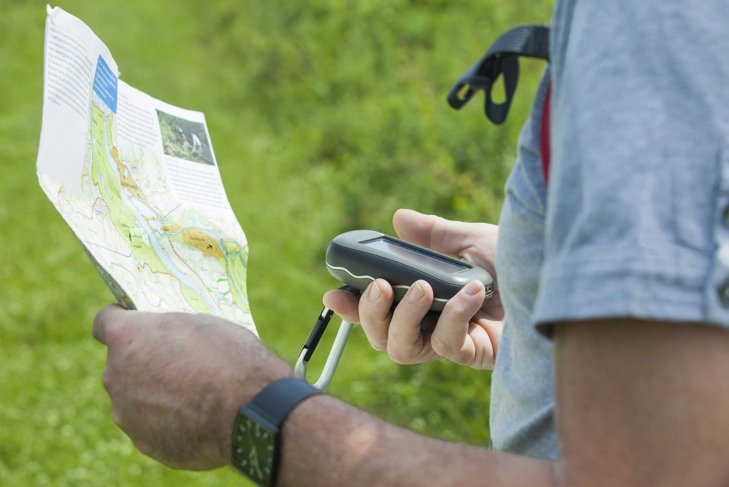
Who are those intent-looking folks walking the trails and forests, attention firmly fixed on their phone’s GPS (Global Positioning System)? Are they lost? Maybe not—those adventurers might just be geocaching.
What is geocaching?
Invented in 2000 by a group of techies and GPS aficionados (aka geeks), geocaching is described as a “real-world, outdoor treasure hunting game using GPS-enabled devices.” The treasure in this case is called a “cache,” and those who find the cache are called “cachers.”
Would-be cachers go to the website geocaching.com to sign up for a free membership and can then search for a geocaching location in their area.
Since it was started more than 15 years ago, geocaching has grown into a worldwide treasure hunt, and anyone with a GPS can get involved. There are geocaches located all over the world—from Afghanistan to Zimbabwe.
What’s a geocache?
The geocache itself is usually hidden in some sort of container suitable for outdoors that can range from a small film canister to a large plastic container.
What’s inside?
At the very least, there’ll be a log so you can sign your name and date when you found the cache. (You’re also encouraged to log your find online at geocaching.com.) But you can find all kinds of wonderful treasures inside a cache.
What’s next?
Any of the treasures inside can be yours, but only if you replace it with something of equal or greater value for the next cacher to find.
Are there health benefits of geocaching?!
Of course! In fact, researchers at Texas A&M University actually studied geocaching’s benefits in a study called Geocaching for Exercise and Activity Research (GEAR) in 2014.
They enrolled 1,000 people between 18 and 77 years old from across the US. Participants tracked physical activity levels over 12 months while geocaching (which researchers referred to as an “exergame”). The average participant walked 16 km (10 mi) per month just while geocaching; they also reported better overall and mental health.
The science says: it’s easier to be fit if you’re also having fun!
So, let’s geocache!
Here’s a pretty basic how-to just to get you started. For more detailed directions, go to geocaching.com.
- Learn how to use your GPS device.
- Create and log on to your geocaching account at geocaching.com.
- Enter your area/postal code and a search radius to be offered a list of geocaches sorted by distance from you.
- Click on a geocache for tons of helpful info to help you find the treasure, including latitude and longitude coordinates.
- Enter these into your GPS and off you go!
- Once you’ve found the cache, sign and date the log, check out the treasures, and replace any you’ve taken.
- Put the cache back where you found it for the next cacher. Be discreet and keep an eye out for “muggles” (non-geocachers)!
- Log your find on geocaching.com.
Did you know?
The first geocache was hidden on May 3, 2000, at N 45° 17.460 W 122° 24.800. The black bucket contained a logbook, pencil, 2 CD-ROMs, a cassette recorder, a George of the Jungle VHS tape, a Ross Perot book, four $1 bills, a slingshot handle, and “a pretty notorious can of beans,” according to geocaching.com. Sadly (especially if you’re craving a viewing of George of the Jungle), you won’t find the cache there now; there’s a tribute plaque in its place.
Did you know?
- 8 million geocaches are hidden in 180 countries around the world
- 229,445 unique caches are hidden in Canada
- 160,000 Canadians are registered users on geocaching.com
